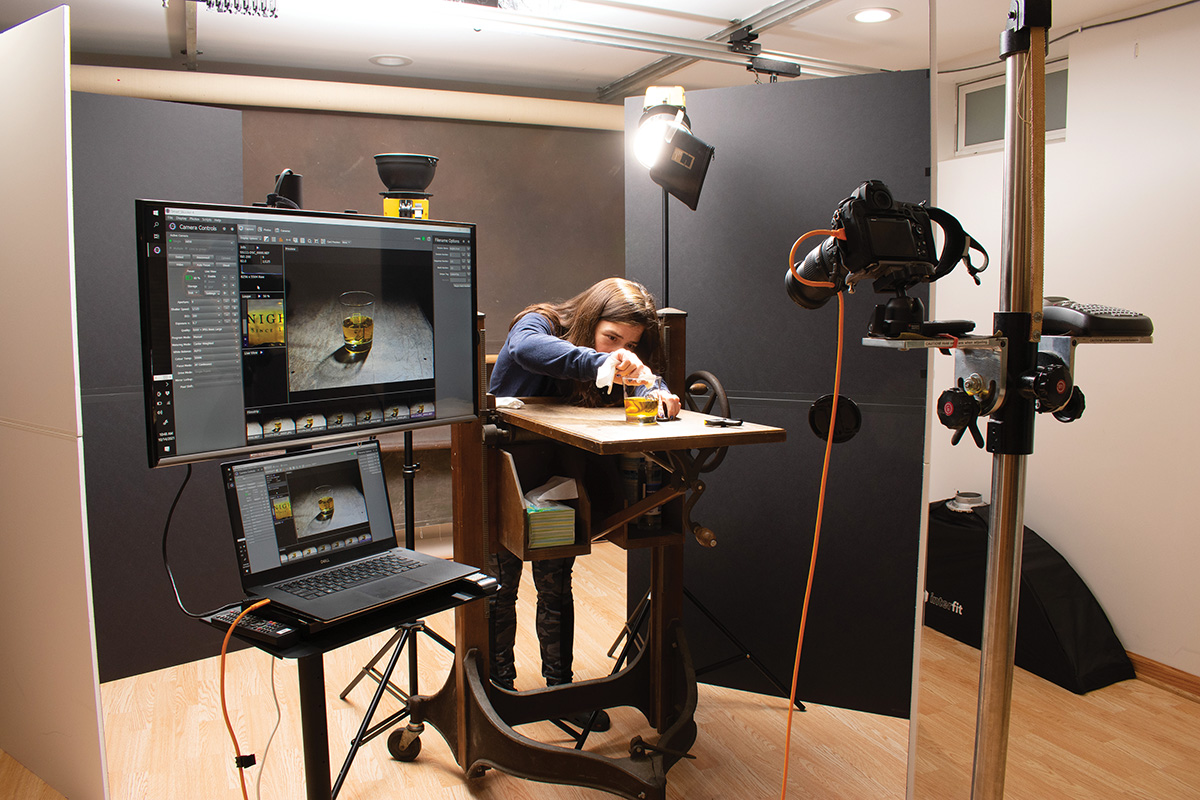Tethered photography is essential for commercial photographers. And while it can be useful to portrait photographers as well, some may resist the idea of being bound to a computer during a session. Over the course of several weeks, I experimented with Tether Tools’ Smart Shooter 4 for both studio and location sessions, and it didn’t disappoint.
Smart Shooter 4 is standalone software that allows you to shoot tethered with a Canon, Nikon, or Sony camera. This newest version introduced a better interface than its predecessor, featuring capture panes, a filmstrip view, more visible icons, and improved reliability and transfer speed. There’s also a plugin for Lightroom Classic included with the latest update.
Keep in mind that this software is built for adaptability and flexibility; you can customize things as much as needed for your workflow once you get the hang of it. Besides Smart Shooter 4 software and a compatible camera, you’ll need a tethering cable. Having worked with both short and long tethering cables, I recommend a longer version if possible. Six feet may seem adequate, but trust me, it comes up short when you need to reposition your camera during a session. Tether Tools sells longer cables in bright orange for visibility as well as black.

Having a large live view monitor for commercial photography means you can catch important details in your setup, such as visible smudges on glass. You can also dial in focus exactly as you want it. Onsite clients can also observe production.
THE BASICS
After you connect your camera and computer via tethering cable, the software recognizes whether the camera is on or off. You can control the camera settings the old-fashioned way or with the software. Exposure settings, focus, and even triggering the shutter can be done through the Smart Shooter 4 software.
Working tethered offers advantages such as instant feedback for your client on a screen that’s larger than your camera’s LCD, and large-scale live previews that you can examine before you activate the shutter. Advanced users could write a script or API (a software intermediary that allows two applications to talk to each other) that runs on images as they are saved to the computer to, for example, deposit a background behind the portrait subject.

On a location assignment it’s reassuring to know while you're still onsite that you have nailed the focus and gotten the images that work for the client.
TESTING
My goals for testing the software were on the simpler side. I checked for focus at key areas, hooked my laptop to a TV screen so my client could see their headshots as we created them, and zoomed in to check for stray fingerprints on a glass. Beyond that, I found the software good for testing lighting setups. When you work solo, it’s sometimes hard to prep the lighting setup, but I was able to sit in front of my camera with my tethered laptop and capture test shots for evaluation purposes.
Nearly every photographer has had that oh no moment when you get back to the studio only to realize that the autofocus made a mistake. The image might be salvageable, but it could have been better. This is where shooting tethered offers its greatest advantage. I took my laptop and tethering cable on a location shoot. As we created portraits for branding purposes, my client could preview the look I was going for on my laptop, and I was able to ensure the images were sharp as a tack.

RIGHT FOR YOU?
If you want to try out the benefits of Smart Shooter 4 for yourself, there’s a 30-day free trial available for download that gives you plenty of time to put the software through its paces.
There’s also a Pro version that enables simultaneous use of up to eight cameras and allows users to create scripts, scan bar codes or QR codes, and integrate into external APIs. If that sounds like gibberish, you probably don’t need the Pro version. But if you do product photography, you can imagine the benefits and how these features would save time.
There’s a bit of a learning curve to the software. You’ll want to figure out how things work before using it for a critical photo shoot. Additionally, I recommend you save images to both your camera’s memory card and your computer in case of a sync error. You wouldn’t want to lose an image if your camera suddenly came untethered or the software were to crash. This isn’t due to any flaw in Smart Shooter 4, just a standard redundancy precaution.
If you’ve ever contemplated photographing tethered, you may want to give Smart Shooter 4 a try. If your photographic specialty relies on precise focus points and knowing that what you see is exactly what you’re getting, then Smart Shooter 4 is for you whether you’re a commercial or portrait photographer, in studio or on location.
Smart Shooter 4 is $69.95 or $195.95 for the Pro version (single-user license). Along with a compatible camera, you’ll also need a tethering cable. For more information or to download a 30-day free trial, visit tethertools.com.
Betsy Finn is a portrait artist. Her studio, Betsy’s Photography, is located in Dexter, Michigan
Tags: gear


